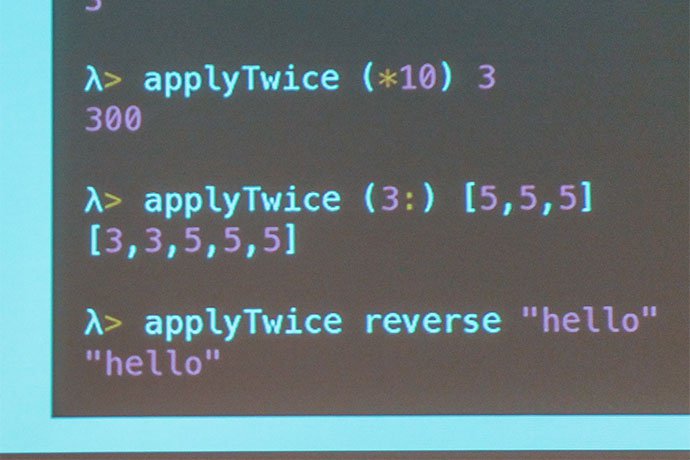

That let you execute C# code at runtime in your. If you want to keep in touch and receive announcements and status updates, you can follow on Twitter. If you want to share your opinion, request a feature, report a bug, or ask a question, please visit gitter.im/tryitonline or send an email to In addition, Stack Exchange users with at least 20 reputation can chat on.
Haskell language software#
The software that powers TIO is open source (MIT) and can be found on /TryItOnline.The TIO web app is free of charge, ad-free, and doesn't use tracking cookies or third-party analytic scripts.If you have a request or want to report a bug, use any of the contact options listed below. TIO listens: languages and features are added by request all the time.TIO hosts practical and recreational programming languages, for a total of languages.You can share your code by generating a client-side that encodes code and input directly in the URL. Once you click the run button, your code is sent to a TIO arena, executed in a sandboxed environment, and the results are sent back to your browser. To use TIO, simply click the arrow below, pick a programming language, and start typing.
Haskell language how to#
A pattern in this encoding is something that describes how to map free variables, so Bind just adds an extra inhabit like what a normal lambda would do and Pair composes the maps of other patterns.TIO is a family of online interpreters for an evergrowing list of practical and recreational programming languages. My extension here uses GADTs (and HKTs) to make this work with patterns as well. Lambdas in this encoding simply add an extra inhabitant to their child term. In the encoding, an abstract syntax tree is parameterized by their free variables.

Right = Lam (Pair Bind Bind) (Var $ Compose $ Nothing)įor those unaware, De Bruijn Notation as a Nested Datatype shows to use nested data types to encode debrujin indexes in the type system. Left = Lam (Pair Bind Bind) (Var $ Compose $ Just $ Nothing) Traverse f (Lam pm e) = Lam pm (traverse (traverse f) e) Traverse f (App e1 e2) = App traverse f e1 traverse f e2 Pair :: Pattern f -> Pattern g -> Pattern (Compose f g)Īpp e1 e2 >= f = App (e1 >= f) (e2 >= f) Lam :: Traversable f => Pattern f -> Term (f x) -> Term x I just figured out how to encode pattern matching into "De Bruijn Notation as a Nested Datatype":

Ask a question on Haskell Stack Overflow.This includes a human posting the output of a bot, such as ChatGPT.īlockchain posts must be tagged Blockchain posts are allowed as long as they are related to Haskell, but they must use the "blockchain" tag. They will be banned with extreme prejudice. Bots cannot be used to make posts or comments. Simply looking for people with interest in or experience with Haskell is not sufficient. Job postings are allowed as long as the job actually involves working with Haskell. Questions about homework are fine, but this subreddit is not here to do your homework for you. Both asking and answering homework questions is not allowed. No matter how funny, memes and image macros are not allowed. Posts about topics that are adjacent to Haskell, like for example functional programming, are typically allowed. For example a post about OCaml would only be allowed if there was a connection to Haskell. Top-level posts should be primarily about Haskell. The Haskell programming language community.ĭaily news and info about all things Haskell related: practical stuff, theory, types, libraries, jobs, patches, releases, events and conferences and more.


 0 kommentar(er)
0 kommentar(er)
